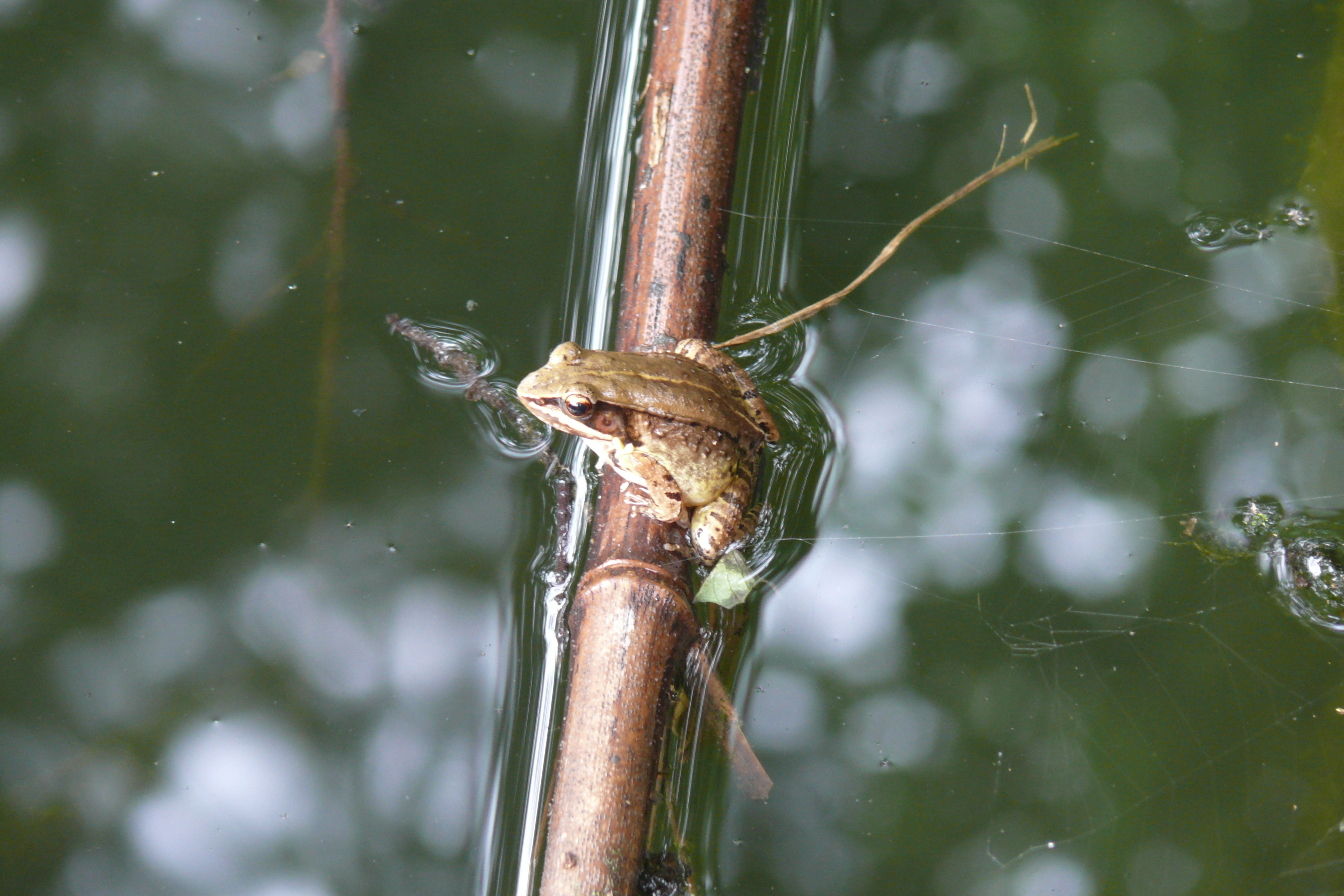Female Frog Calls Out During Sex to Excite Her Lover

Things can get hot and heavy in swamps where the Emei music frog lives. Scientists have discovered that females of this species make unique sounds during sex to encourage the performance of their male lovers.
The findings could point to a previously unknown mode of communication in anurans (frogs and toads), opening up an avenue of study that hadn't been explored before in female frogs.
The calls of female Emei music frogs alternate with the rhythmic motions of a male on her back. When researchers interrupted the male's movement, the female protested, making a long burst of clicks until her guy was allowed to resume. [Image of Emei music frog]
This is the first time courtship interaction has been observed in frogs, suggesting that "female vocalizations stimulated male's sexual behavior," said Jianguo Cui, an assistant professor at the Chengdu Institute of Biology at the Chinese Academy of Sciences and lead author of a paper on the finding in the journal Animal Behaviour.
Hubba, hubba; ribbit, ribbit
The males in most frog and toad species are well-known for attracting mates using distinctive sounds, ranging from high-pitched peeps to full-throated croaks. Females will sometimes sing as well, creating "duets" that help the amorous amphibians find each other in dark bogs.
In an unusual practice for anurans, it's the male Emei music frogs that are stationary. They build muddy burrows and then holler out to wandering femmes, or sometimes leave the nest in an attempt to lure females back. The males' calls sound like thin guitar strings being plucked.
Sign up for the Live Science daily newsletter now
Get the world’s most fascinating discoveries delivered straight to your inbox.
After a receptive female enters the underground nest, the male mounts her in a typical mating embrace called amplexus. This position lines up the male and female frogs' cloacas, which are orifices at their rears from which sperm and egg flow, respectively. In some species, male frogs make noise during sex, but females remain silent.
Lovely tunes
Cui and his colleagues replicated Emei music frogs' marshy, southwestern Chinese environment in a tank and rigged up video and audio devices to record episodes of mating.
To the researchers' surprise, female frogs generated rapid clicks for a few seconds during intervals between a male's humping-like movements.
Cui thinks that the males' lusty activity mechanically stimulates the females to ovulate (release eggs). The female's love sounds prompt the male's pace, somewhat akin to the clichéd human female bedroom exhortations of "harder!" and "faster!" [Wild Sex Cries Aim to Advertise Partner's Popularity]
Female calls can also rile guys up away from the bedroom burrow, the researchers saw. Recorded female clicks incited more frequent and aggressive voicing from male frogs, who in some cases, even plundered each other's nests to try to eliminate the competition.
Speaking up
Kentwood Wells, a behavioral ecologist who specializes in frogs at the University of Connecticut and who was not involved in the study, suspects that female frogs' side of the story in anuran society has to an extent gone untold. Females' softer voices often get drowned out by bellowing males.
"You can't hear females in the field, because it’s a deafening racket out there," Wells said. "I think the whole topic of female calls is underexplored."
For now, Cui and his colleagues are following up on their findings, which they published last year, by investigating the notable variances in males' musical calls amongst different individuals.
It's possible that male Emei music frogs could learn to "recognize" their neighbors via characteristic calls, Wells said; there is evidence of this sort of identification amongst American bullfrogs.
"When you have frogs all packed in pretty close [in a marshland], if they can learn what their neighbors sound like, they won't spend a lot of time reacting to neighbors' calls," Wells told LiveScience. "But if a stranger male shows up outside the burrow, then the frogs can go on the attack, presumably."
Follow LiveScience for the latest in science news and discoveries on Twitter @livescience and on Facebook.










